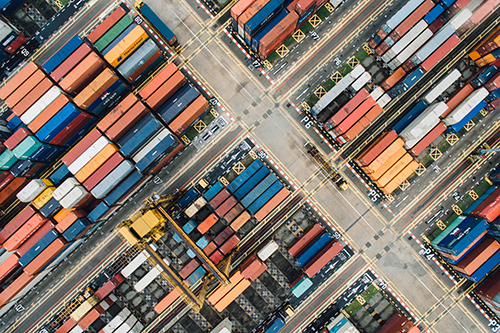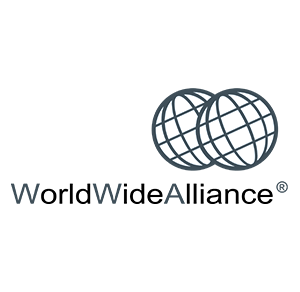In International Trade, one of the most important areas to have in mind when writing and signing a sales contract are Incoterms, as they affect the final price of a freight quotation.
That’s why we want to dedicate a series of articles and videos about them explaining what they are and how are they used but also which Incoterms are the most used by importers and exporters depending on the sales operation, for example if it’s LCL or FCL.
Today we are starting with the basics and along the article you’ll also find a video we’ve prepared with the essentials.
What are Incoterms?
Incoterms or International Commercial Terms are a series of pre-defined rules, of voluntary use, relating to international commercial law. They describe the conditions to which seller and buyer of goods agree (who is responsible/pays for what) for the international sale and supply of those goods.
Incoterms were created by the International Chamber of Commerce (ICC) in 1936 and thanks to their usefulness they were rapidly used in all the world. Nowadays Incoterms are accepted internationally by gobernments and public administrations, although, as we’ll see later, they have been updated since their conception.
Why are they so important?
In any business, all different parties look after their own benefit , and that’s why it’s so important deciding who will be responsibile for what in any trade. It can also be really complicated and start conflict and confrontations between said parties.
Incoterm were, as we’ve said, created with the objective to set a unified criteria regarding the responsibilities and obligations to which seller and buyer of goods agree beforehand so they know at all times who must bear with what costs or risks. This helps reduce confrontation and misunderstandings between traders and in turn minimize trade disputes and litigation. Furthermore, a good knowledge of Incoterms can help save money derived from, for example, delays or mishandling of the goods.
How to read Incoterms and what do they mean?
Currently, there are 11 Incoterms, they are made up by combining 3 letters. The first letter represents the category.
They are divided into 4 categories, E, C, F o D.
But they can also be divided as follows:
- Incoterms for any mode of transport: EXW, FCA, CPT, CIP, DPU, DAP y DDP.
- Incoterms only for sea and inland waterway transport: FAS, FOB, CFR, CIF.
Types of Incoterms
Group E
In this group main responsibilities fall to the buyer. The seller packs the cargo and waits for it to be picked up. Incoterms in this group:
- EXW, also knows as Ex-works. As stated above, the buyer is the one responsible for most of the responisibilities.
Group F
In this case, the seller is responsible for delivery according to the pre-arranged shipping method (paid by the buyer) who is also responsible for the following costs and risks. This group contains the following Incoterms:
- FCA – Free Carrier. The seller is the one with the obligation to deliver the goods in the agreed-upon location but the costs and risks of this freight contract fall on the buyer.
- FAS – Free Alongside Ship. Incoterm mostly used for bulk cargo and maritime transport. Here the seller must deliver the goods, packaged accordingly and cleared for export, and place them besides the vessel (appointed by the buyer) at the agreed port. The buyer is the one responsible for the cost and risk associated with the freight contract.
- FOB – Free On Board. Another shipping specific Incoterm. In this case the seller delivers goods on-board a vessel nominated by the buyer. Once the goods are on-board the vessel is the buyer made responsible.
Group C
Like in Group F here the seller is responsible for delivery but now they do pay for transport. Once the goods are loaded into transport the buyer assumes responsibility for the risks. In this group we find:
- CFR – Cost and Freight. Used only for waterway transport, here the seller is responsible for the freight contract but once the goods are safely stowed on board, responsibility for them passes to the buyer,
- CIF – Cost, Insurance and Freight. Also used only for shipping, like with CFR the seller pays for the freight contract but also for the insurance coverage.
- CPT – Carriage Paid To. The seller is responsible for arranging the transportation of the goods to a named destination, but not for insuring them. The seller should ensure that they make it clear on their quotation that their responsibility for the goods ends at loading.
- CIP – Carriage and Insurance Paid To. Here the seller is responsible for paying the freight and insurance charges required to transport the goods to the selected destination.
Group D
In this modality main responsibilities fall to the seller. Only when the goods have arrived at the destination is the buyer responsible for the following risks and costs. Incoterms in this group:
- DAT – Delivered At Terminal. The term indicates the seller is responsible of all charges until the cargo is delivered to the agreed terminal (container yard, quayside, warehouse…). The seller has to deliver the goods to a named place of destination, once the goods have been unloaded.
- DAP – Delivered At Place. In this case the seller is also responsible for most of the charges up to the named place of destination, but here they deliver the goods ready for unloading. The buyer is the one responsible to effect any customs clearance and pay any import taxes.
- DDP – Delivered Duty Paid. For this, the seller is responsible for most of the charges and obligations.
After looking at the 11 types of Incoterms, it’s clear that knowing them and what each and everyone implies is fundamental to any successful international transaction as their good knowledge and use can contribute to substantial money savings if chosen the right Incoterm.

How are they used?
Incoterms should be included on documents like sales contract, purchase order, proforma, commercial invoices and other documents, and appear like this:
[Chosen Incoterm rule] + [the named port, place or point designated] + [set of Incoterms (year of publication) used]
As we’ve said, Incoterms where first used in 1936 and since then they have been revised periodically. The current version is Incoterms 2020, which has substituted Incoterms 201, but have in mind that the new 2020 ones do not invalidate Incoterms 2010, so make sure to note which you are refereeing to in your documents to avoid any confusion.
Once again, Incoterms are used and accepted internationally, but they are not compulsory. Although their use is appreciated —as it makes clear the terms of the sale and avoids misunderstandings—, is important to remember Incoterms don’t cover everything. For example Incoterms don’t mention the price of the goods or the payment method for the operation.
As we’ve seen, Incoterms can refer to multiple specifics when importing or exporting internationally. That’s why we’ve decided to write this series and videos, to talk about them and expand beyond this introduction to explain in more depth which Incoterms are most useful when shipping and offering LCL services.
Follow us on on our YouTube channel and don’t miss anything!











